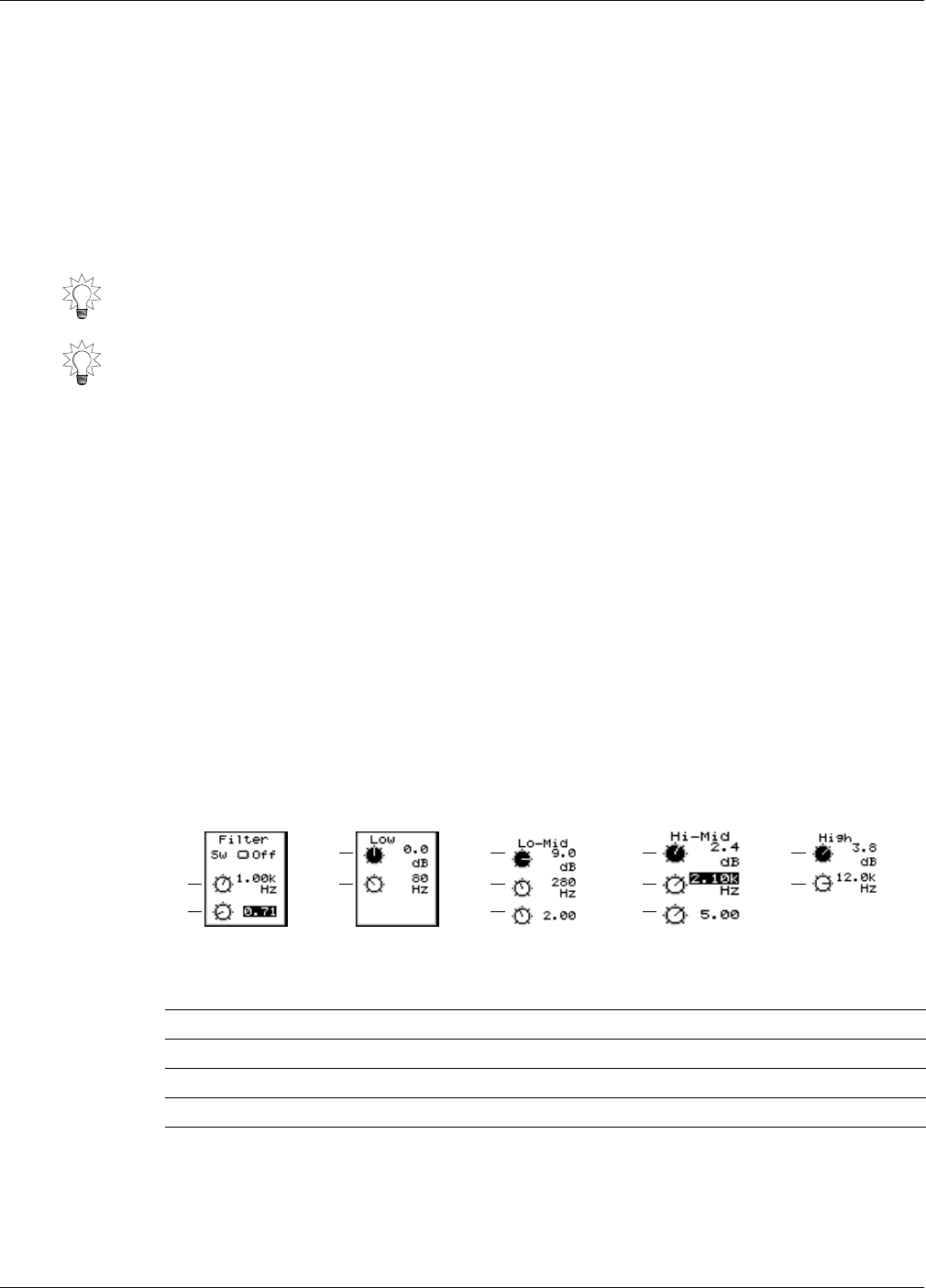
11—Input and Track Channel Tools
Roland VS-2480 Owner’s Manual www.rolandus.com 163
The Basic Mechanics of an Equalizer
All EQs use the same basic devices to do what they do. They all contain a:
•
frequency selector
—that allows you to select the desired frequency range by selecting
the frequency at its center, sometimes called the “center frequency.”
•
gain control
—that lets you turn the selected frequencies up or down in volume.
“Parametric” EQs also offer a Q, or bandwidth, control. This control lets you set the
width of the affected range of frequencies below and above the center frequency.
The Basic Mechanics of a Filter
There are several ways a filter can work. It can behave as a:
•
low pass filter
—that lowers the volume of all frequency content above a specified
frequency, called the “cutoff frequency.” It’s a “low pass” filter because it lets all
frequencies that are lower than the specified frequency pass through unaffected.
•
high pass filter
—that lowers the volume of all frequency content below the specified
cutoff frequency. It’s called a “high pass” filter because it lets all frequencies that
are higher than the specified frequency pass through unaffected.
•
band pass filter
—that only allows the selected band of frequencies to pass through
unaffected, lowering the level of all other frequency content below and above the
selected range of frequencies.
•
band eliminate filter
—that reduces the level of the selected range of frequencies.
The EQ Screen Frequency-Based Tools
The EQ screen provides a set of tools with which you can alter the frequency content of
the channel’s signal: a filter and four bands of equalization.
The channel signal flows through the EQ screen from top to bottom in the chart above,
or left-to-right onscreen.
You can find a frequency by turning up the EQ’s gain and sweeping through the
frequency values until you hear what you want. If you’re using a parametric EQ, lower
the Q. Once you’ve found the frequency, set the gain and Q as desired.
Here’s an EQ tip: Set the gain control so that the sound changes the way you want it to,
and then back off a little. This simple trick can really improve your EQ.
This tool: Offers these controls:
Filter configuration switch, frequency selector, Q control
Low Band EQ gain control and frequency selector
Lo-Mid Band EQ gain control, frequency selector, Q control
Hi-Mid Band EQ gain control, frequency selector and Q control
High Band EQ gain control and frequency selector
G
F
Q
G
F
G
F
Q
F
Q
G
F
G=gain control; F=frequency selector
VS2480OMUS.book 163 ページ 2006年2月7日 火曜日 午後4時16分


















